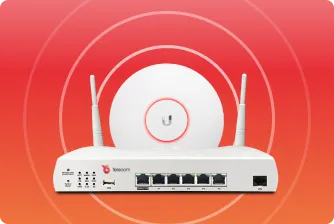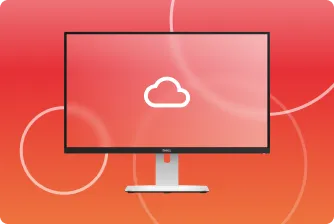In today’s interconnected digital landscape, cybersecurity has become an indispensable aspect of running a successful business. As technology advances at an unprecedented pace, so do the threats posed by cybercriminals. From small startups to large enterprises, no business is immune to the potential devastation caused by a cybersecurity breach. That’s why it is crucial for businesses of all sizes and industries to prioritise their cybersecurity efforts.
In this blog, we will serve as your guide to navigating the complex world of cybersecurity. Our aim is to provide you with essential knowledge and practical insights that will empower you to protect your business from cyber threats effectively. Whether you’re a business owner, a manager, or an IT professional, understanding the importance of cybersecurity is paramount. By adopting robust security measures and implementing best practices, you can safeguard your valuable assets, preserve customer trust, and mitigate the financial and reputational risks associated with cyber incidents.
Let’s dive in…
Understanding Cybersecurity
In order to effectively protect your business from cyber threats, it is essential to have a clear understanding of what cybersecurity entails. At its core, cybersecurity refers to the practice of safeguarding electronic systems, networks, and data from unauthorised access, theft, damage, or disruption. It encompasses a wide range of measures and technologies designed to counteract cyber threats and ensure the confidentiality, integrity, and availability of your digital assets.
Cyber threats come in various forms, including malware, ransomware, phishing attacks, social engineering, and more. These threats can lead to data breaches, financial loss, operational disruptions, and reputational damage. By comprehending the different attacks and the potential impact they can have on your business, you can better anticipate and mitigate risks.
Moreover, it is crucial to identify and address vulnerabilities within your systems. Common vulnerabilities include weak passwords, outdated software, unpatched systems, and insecure network configurations. Understanding these weaknesses allows you to proactively implement security controls and protocols to mitigate potential risks.
By familiarising yourself with the fundamentals of cybersecurity, you can make informed decisions regarding the protection of your business.
Building a Strong Cybersecurity Strategy
Creating a robust cybersecurity strategy is the foundation for safeguarding your business against cyber threats. It involves a comprehensive approach that encompasses risk assessment, policies and procedures, employee education, access controls, software updates, and network security measures.
To begin, conducting a thorough risk assessment allows you to identify your business’s valuable assets and potential vulnerabilities. This assessment enables you to prioritise your security efforts and allocate resources effectively.
Next, establish clear security policies and procedures that outline acceptable use of technology, password requirements, data handling practices, and incident reporting protocols. These policies serve as guidelines for employees and create a culture of security awareness within your business.
Educating employees about cybersecurity best practices is crucial. Regular training sessions and awareness programs can help them recognise phishing attempts, understand the importance of strong passwords, and be cautious when handling sensitive data. Employees should be encouraged to report suspicious activities promptly to mitigate potential threats.
Implementing access controls and authentication mechanisms is vital to ensure that only authorised individuals can access sensitive systems and data. This includes multi-factor authentication, role-based access controls, and regular review of user privileges.
Regularly updating and patching software and systems is essential to address known vulnerabilities and protect against emerging threats. This practice reduces the risk of exploitation by cybercriminals who target outdated or unpatched software.
Furthermore, implementing network security measures such as firewalls, encryption, and intrusion detection systems enhances your business’s overall security posture. These technologies work together to detect and prevent unauthorised access, protect data in transit, and monitor network activity for any signs of compromise.
Protecting Data and Information
Data is the lifeblood of modern businesses, and safeguarding it is paramount. Protecting your business’s data and sensitive information requires a multi-layered approach that includes encryption, backups, secure storage, and compliance with data protection regulations.
Implementing data encryption techniques is crucial for ensuring the confidentiality of your sensitive information. Encryption converts data into an unreadable format that can only be decrypted with the appropriate key. By encrypting data, you add an extra layer of protection, even if unauthorised individuals gain access to it.
Regularly backing up your data and implementing robust disaster recovery plans are essential. Backups should be performed on a regular basis and stored securely, preferably off-site or in the cloud. In the event of data loss or a security breach, having recent backups allows you to restore your data and resume business operations with minimal disruption.
Securing sensitive customer information, such as personally identifiable information (PII), is crucial for maintaining customer trust. Follow best practices for data handling, including secure transmission and storage of customer data, and limit access to only those employees who need it for their job responsibilities. Compliance with data protection regulations, such as the General Data Protection Regulation (GDPR) or the California Consumer Privacy Act (CCPA), is essential to avoid legal repercussions and maintain customer confidence.
Staying informed about evolving data protection regulations and ensuring compliance is vital. Stay up to date with the latest requirements and establish procedures to handle data breach incidents effectively, including notifying affected parties and relevant authorities within the required timeframes.
Securing Network Infrastructure
Your network infrastructure serves as the backbone of your digital operations, making it a prime target for cybercriminals. Securing your network infrastructure is crucial for protecting sensitive data, maintaining uninterrupted business operations, and ensuring the integrity of your systems.
Establishing a secure network architecture is the first step. This involves implementing best practices, such as segmenting your network into distinct zones to limit the spread of potential breaches. By separating critical systems and data from less secure areas, you reduce the attack surface and minimise the impact of a security incident.
Implementing intrusion detection and prevention systems (IDPS) is vital for detecting and mitigating unauthorised access attempts or malicious activities within your network. IDPS monitors network traffic, identifies suspicious patterns or signatures, and takes proactive measures to prevent or minimise the impact of potential threats.
Regular network security audits help identify vulnerabilities and areas for improvement. These audits assess your network’s configuration, review access controls, and test security measures to ensure they align with industry standards and best practices. Any identified weaknesses should be promptly addressed to enhance your network’s security posture.
Securing wireless networks and remote access is essential in today’s mobile workforce environment. Implementing strong encryption protocols, changing default credentials, and regularly updating firmware for wireless access points are key steps. Additionally, implementing virtual private networks (VPNs) for remote access ensures secure communication between remote locations and your network infrastructure.
Monitoring and logging network activities provide valuable insights into potential security incidents or suspicious behaviour. By analysing network logs, you can identify anomalies, detect potential breaches, and respond promptly to mitigate the impact. Real-time monitoring tools and security information and event management (SIEM) systems can help streamline this process.
Managing Security Incidents
No business is entirely immune to security incidents. That’s why it is crucial to have a well-defined incident response plan in place to effectively manage and mitigate the impact of security breaches when they occur.
Creating an incident response plan begins with assembling a dedicated incident response team. This team should include individuals from various departments, such as IT, security, legal, and public relations, to ensure a comprehensive and coordinated response.
The incident response plan should outline the steps to be taken when a security incident occurs. This includes initial incident detection and reporting, containment of the incident to prevent further damage, eradication of the threat, and recovery of affected systems and data. Each step should be clearly defined, and responsibilities should be assigned to team members.
Detecting and responding to security incidents promptly is crucial. Establish mechanisms for monitoring and alerting to identify suspicious activities or signs of compromise. This can include the use of security information and event management (SIEM) systems, intrusion detection systems (IDS), and threat intelligence feeds. When an incident is detected, a rapid response should be initiated to minimise the impact and limit the scope of the breach.
Recovering from a security incident involves restoring affected systems, ensuring data integrity, and implementing measures to prevent similar incidents in the future. This may include patching vulnerabilities, changing access credentials, and conducting thorough post-incident reviews to identify lessons learned and improve security practices.
Learning from security incidents is essential for continuous improvement. Documenting and analysing incidents helps identify trends, vulnerabilities, and areas of weakness. This knowledge can be used to update security policies and procedures, enhance employee training programs, and implement additional security controls to better protect your business in the future.
Keeping Up with Emerging Cybersecurity Trends
The field of cybersecurity is constantly evolving, with new threats, attack techniques, and technologies emerging regularly. Staying informed about these trends is crucial to maintaining an effective defence against cyber threats and protecting your business.
One of the key aspects of staying updated on emerging cybersecurity trends is understanding the evolving landscape of cyber threats. Cybercriminals continuously adapt their tactics, techniques, and procedures to bypass traditional security measures. By staying informed about the latest threats, such as ransomware variants, social engineering techniques, or zero-day vulnerabilities, you can proactively implement countermeasures to mitigate the risks.
In addition to threats, it is important to be aware of the latest security technologies and practices. Advancements such as artificial intelligence (AI)-driven threat detection, behavioural analytics, and secure coding practices can significantly enhance your cybersecurity posture. By staying up to date with emerging technologies, you can assess their applicability to your business and leverage them to bolster your defence mechanisms.
Engaging with the cybersecurity community through industry conferences, webinars, forums, and professional networks is another effective way to keep abreast of the latest trends. Networking with experts, sharing insights, and participating in discussions can provide valuable knowledge and practical tips for enhancing your cybersecurity strategy.
Moreover, subscribing to reputable cybersecurity publications, blogs, and newsletters can help you access timely information about emerging threats, vulnerabilities, and best practices. These resources often provide expert analysis, case studies, and actionable advice that can assist you in adapting your security measures to the evolving threat landscape.
To Sum Up…
In today’s digital age, cybersecurity is a critical aspect of running a successful business. By prioritising cybersecurity, understanding the threats, and implementing robust security measures, you can safeguard your valuable assets, maintain customer trust, and mitigate the risks associated with cyber incidents.
From building a strong cybersecurity strategy to protecting data, securing network infrastructure, managing security incidents, and staying updated on emerging trends, you now have the tools and resources to fortify your business’s defences. Remember, cybersecurity is an ongoing process that requires continuous learning, adaptation, and vigilance. By staying informed, engaging with the cybersecurity community, and implementing best practices, you can stay one step ahead of cyber threats and ensure the long-term security and success of your business.
Interested in learning more about Emerging Business Technologies? Check out our latest whitepaper, which delves deeper into the topic and breaks down how YOU can take advantage and boost your business success: Emerging Business Technologies: Your 2023 Guide.
Here at Yo, we’re all about improving the success of the businesses we deal with. So, If you are interested in learning more about improving your business development, or generally future-proofing your business – enter your contact details into the form below and we’ll be in touch with how we can help you and your business TODAY!











